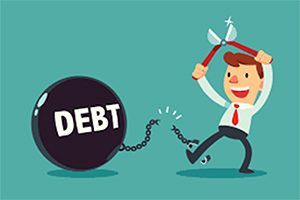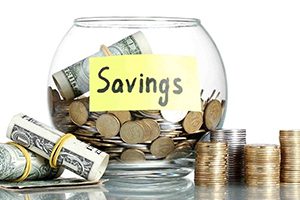When you find yourself with excess money due to the COVID-19 stimulus check, you’re in a good position to put it to good use. Of course, many of us have to use that money to pay for necessities due to being out of work. But for those of us lucky enough to still be working, that extra $1,200 (plus $600 per child) can go a long way.
There’s a chance that Congress passes another stimulus bill that involves a second check. However, there are no reports of any such bill being in the works at the time of writing this article. Still, if it does happen, you can use all of the following tips for any additional influxes of money.
1. Use It to Pay Off Debts

The most obvious use of the stimulus check is to pay off any loans. These can include credit card balances, student loans, mortgage, and so on. But it’s always recommended that you pay off the option that has the highest interest rate first, not necessarily the one that’s closest to being behind you.
For example, it may be tempting to pay off more of the mortgage and leave the credit card bills for later. But if the mortgage interest rate is lower than the credit card’s, you’re better off paying down the credit card bill.
Still, any overdue bills should be prioritized, especially if it involves utilities or rent payments. But if the essentials are out of the way, you can distribute the check accordingly.
2. Put It in a High-Interest Savings Account

You can find a lot of different high-interest savings accounts online. But make sure to read the fine print before you choose the one you think is best. Terms like, “Up to 5% interest,” likely means that you need a large minimum amount to receive the maximum benefits. In some cases, the minimum could be $10,000. In others, the minimum can be 10 times that.
But a high-interest savings account is the safest way to invest your money. There’s zero risk – the amount in your account will accrue interest based on how much is in there. If you add more, you receive more in interest. And you can withdraw without a fee a handful of times per month.
3. Invest It in Low-Risk Stocks and Bonds
 To see bigger dividends, you’ll need to take on a bit of a risk, but they’re minimal. You can invest your money in an IRA account, which is a popular choice that many uses to save for retirement.
To see bigger dividends, you’ll need to take on a bit of a risk, but they’re minimal. You can invest your money in an IRA account, which is a popular choice that many uses to save for retirement.
You can also more directly control your investment portfolio with preferred stocks that payout fixed amounts every week, another low-risk option. Corporate bonds (4%-5%) can pay out more than Treasury bonds (1%-2%). But make sure you choose a strong company with a long history of good standing.
For more moderate risk, you can look into common stocks that pay dividends. Some companies have a yield as high as 6% or more paid out per payment period, which can be weekly, monthly, or quarterly.
4. Buy a High-Priced Item

You can turn your stimulus check into a product that brings entertainment or convenience value to your home. If you’d been holding off on purchasing the newest TV or smart home product, you can take the unexpected cash and use it for that.
Chances are that whatever you purchase will diminish in value over time. But if you already have a system for saving and investing money that doesn’t require a stimulus check, it’s not a waste of money to indulge.
This is can be especially valuable if you’re spending more time at home. Never discount the long-term effects of self-care, which can greatly reduce stress levels. There’s no shame in looking out for your—and your family’s—happiness.
5. Make A Down Payment
 You may be surprised to learn that now is not a bad time to buy a new home or vehicle. A lot of lenders are even offering special loan discounts, even for those who are currently homeowners. Whether a house or a condo, now may even be the best time to lock down a new piece of property.
You may be surprised to learn that now is not a bad time to buy a new home or vehicle. A lot of lenders are even offering special loan discounts, even for those who are currently homeowners. Whether a house or a condo, now may even be the best time to lock down a new piece of property.
If you add $1,200 to a down payment, it can actually serve to lower your interest rate and shorten the length of your loan. At the very least, it means paying less at a later date when we don’t have a stimulus check coming in.
The stimulus check can also go toward moving expenses, which can add up quickly.
6. Use It to Shop Local

If you’re just looking to enjoy having a bit of extra cash on hand, consider spreading it around your community. Even buying directly from a chain down the street injects money into the local economy more so than buying from the corporate website.
But the biggest impact your money can have on the longevity of your local shops and restaurants is buying from a small business. The money spent is extremely likely to remain local, which can circle back to your business while ensuring your favorite spots remain open.
It’s tempting to simply buy from Amazon. But the benefits of shopping local to the community as a whole is substantial enough to be worth the minimal additional investment.
7. Support Someone Through GoFundMe and Other Channels

If you’re feeling generous, you can pay your money forward in extremely direct and impactful ways. Visit GoFundMe and explore the different causes that you can support. From hospital bills to bail funds to helping workers in industries hit hard by the lockdowns, your generosity can make a huge difference.
You may also see people you follow on social media directing people to specific Cash App and Venmo accounts. This is an even more direct way to help because neither you nor the recipient needs to pay fees.
8. Support Independent Media and Journalism

If you’ve been holding off on getting rid of those paywalls at some of your favorite publications, now may be the time. With the $1,200, you could pay $5 per month for 20 different services, and that’s the high end of the subscription fees.
Another example is premium podcast subscriptions and internet media companies. The folks whose work got you through countless hours of quarantining can use your support to create more content for you to enjoy for years to come.
Consider who you rely on the most for information and entertainment. The easiest way to ensure they continue is by subscribing to their content.
9. Give It to a Charity

The easiest way to help as many people as possible during this time is by donating to a charity. Pick a cause that means something to you, then look up the organizations within that cause. Resources like Charity Navigator help you know that you’re donating to a group that’s above board and transparent about their services.
It’s impossible to truly help others if we haven’t first helped ourselves. But if you feel supported enough to give, now is the time when people need you the most.


